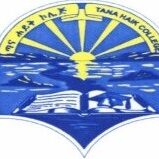Institutional Repositories at Tana Haik College: Preserving and Sharing Academic Resources
Tana Haik College’s Institutional Repositories serve as a central hub for collecting, preserving, and sharing the intellectual output of the college’s academic community. These repositories include research papers, theses, dissertations, conference proceedings, and other scholarly works produced by faculty, students, and researchers. The institutional repositories are an essential resource for knowledge dissemination and fostering academic collaboration.
Objectives of Institutional Repositories
The primary objectives of the institutional repositories at Tana Haik College are to:
- Preserve Academic Output: Ensure the long-term preservation of scholarly works produced by the college’s academic community.
- Enhance Accessibility: Provide open access to research and academic resources, making them available to a broader audience.
- Support Research and Learning: Facilitate knowledge sharing and support academic research by making available a wide range of resources for students, faculty, and external researchers.
- Promote Institutional Visibility: Showcase the academic achievements of Tana Haik College, increasing its visibility and reputation in the academic and professional world.
Key Features of the Institutional Repositories
- Digital Archive: The repositories are digital platforms that store and organize a wide range of academic materials, including research articles, dissertations, working papers, technical reports, and conference papers.
- Open Access: The repositories are accessible to the public, allowing students, academics, and professionals from around the world to access the materials without restrictions. This open access policy promotes the dissemination of knowledge beyond the confines of the college.
- Multidisciplinary Collection: The repositories contain materials from various academic disciplines, including business, science, technology, social sciences, health, and the humanities. This ensures that research from diverse fields is available for consultation and reference.
- Searchable Database: The institutional repositories are equipped with a powerful search engine that allows users to search for specific topics, authors, or publications easily. This ensures efficient access to the resources needed for research and learning.
- Long-Term Preservation: The repositories are designed to preserve academic works in a stable digital format, ensuring that future generations of students and researchers can access and benefit from past research.
- Collaboration and Networking: By providing a central platform for sharing research, the repositories encourage collaboration among scholars within the college and beyond. This can lead to new research initiatives and partnerships.
Types of Materials in the Repositories
The institutional repositories at Tana Haik College house a variety of academic resources, including:
- Theses and Dissertations: Graduate and undergraduate students’ final research projects are archived in the repositories, contributing to the academic record of the college.
- Research Papers: Faculty and student research papers, journal articles, and conference presentations are stored and made available for reference and citation.
- Teaching Materials: Course syllabi, lecture notes, and teaching materials prepared by faculty members are available to support learning and teaching.
- Conference Proceedings: Papers and presentations from academic conferences hosted by Tana Haik College are included in the repositories.
- Technical Reports: Detailed reports on specific research projects, experiments, and studies conducted by faculty and students.
Benefits of the Institutional Repositories
- For Students and Researchers:
- Access to Research: Students and researchers can access a wealth of academic resources, providing a solid foundation for their own research projects.
- Inspiration for New Research: By exploring previous research, students can identify gaps in knowledge and find inspiration for new studies and experiments.
- Improved Learning: The availability of theses, dissertations, and teaching materials enhances the learning experience for students by providing additional learning resources.
- For Faculty:
- Showcase Academic Work: Faculty members can use the repositories to showcase their research and publications, increasing the visibility of their work in the academic community.
- Support Collaboration: The repositories facilitate collaboration with colleagues, both within the institution and from other universities, leading to joint research initiatives and publications.
- For the College:
- Increased Institutional Visibility: The open-access repositories help raise the profile of Tana Haik College by showcasing its academic contributions to a global audience.
- Preservation of Intellectual Capital: The repositories ensure that the intellectual output of the college is preserved and available for future generations.
Submission Process
To contribute to the institutional repositories, faculty members, students, and researchers must follow a structured submission process:
- Prepare the Material: Authors must ensure that their academic work meets the college’s submission guidelines, including formatting, referencing, and originality requirements.
- Submission: Authors submit their materials through an online portal, where they must provide metadata such as the title, abstract, keywords, and author information.
- Review and Approval: Submitted materials undergo a review process to ensure that they meet the academic standards of the college. This may include a plagiarism check and quality review.
- Archiving: Once approved, the material is archived in the repository and made available for public access.

